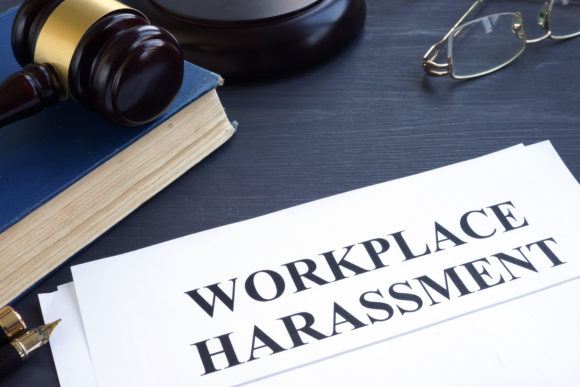By Elisa Martinuzzi, Bloomberg Opinion | June 23, 2020 INSURANCE JOURNAL

Working from home should have liberated employees from toxic workplace behavior such as bullying and harassment. Amid the lockdowns, gone are undesired office encounters, business trips, round-the-clock conferences and much after-hours socializing. Yet, far from ending misconduct, the pandemic lockdowns have displaced it at best and fueled it at worst.
Early anecdotal evidence in the financial services industry — which has all too often silenced victims of harassment — does not paint a pretty picture. SteelEye, which makes surveillance tools for securities trading and communications in banking, told me its clients have witnessed a notable increase in potential impropriety amid a surge in activity and heightened stress in financial markets. While the alerts mostly flag potential insider-trading and market abuse, offensive or hostile language that points to bullying and harassment has shown up too, according to SteelEye’s Chief Executive Officer Matt Smith.
Suzanne McKie, a London-based employment lawyer, whose clients work predominantly in finance, concurs. She told me that she has heard of more occurrences of harassment than before lockdown. This intimidation has not been physical, but it has moved to WhatsApp and text messages on personal phones, which are just as, if not more, difficult for employers to monitor.
McKie says she is also seeing a distinct uptick in complaints of gender harassment and racial intimidation. For example, her clients have reported being excluded from meetings and bullied over video calls – provocations that would have been harder to do in an office with bystanders present. Abruptly leaving a meeting room, for example, is not as easy as hanging up a video call.
Also specific to the coronavirus crisis, McKie says, managers have used furlough as a form of bullying minorities, either by forcing them to take it or by denying the option when it’s been requested. (In the latter case, the hope is this will lead the employee to resign.)
According to another London-based employment lawyer, whose clients also work predominantly in finance, remote working during the pandemic has given rise to harassment in two key ways. First, virtual communication provides a degree of anonymity that can lead people to act in ways they would not do so in person — similar to how the internet and social media produced cyber-bullying, which then became an issue in schools.
Second, stressful conditions from the pandemic have led some working relationships to break down. Inappropriate comments that denigrate an individual, be it over the phone, by text message or by e-mail, are proliferating, the lawyer told me.
If history is any guide, economic vulnerability can breed harassment. In the U.S., workplace harassment charges spiked in the Great Recession to a two-decade record, says Alexandra Kalev, an associate professor in sociology and anthropology at Tel Aviv University. Using data from the U.S. Equal Employment Opportunity Commission, Kalev calculated that the rate of harassment charges in 2008 shot up to 33 per 1,000 employees, a jump that was four times higher than the rate of increase in the decades before. Harassment rises in line with insecurity, Kalev explains.
And right now we are all more vulnerable. Some jobs that have been lost may never return. Those fortunate enough to stay employed are still concerned about their future financial wellbeing. And we are worrying about our physical survival and that of our loved ones, as Covid-19 infection rates continue to ebb and flow. Add in the stress of coping with closed schools and remote working, and it’s easy to see how many people may be at their wits’ end.
Crucially, just as many are at their most strained emotionally, the boundaries between work and private life have blurred, which can facilitate harassment. Take the explosion of video calls and meetings. Colleagues, as well as customers and other contacts, are now regularly brought into the intimacy of our homes. Working out of our kitchens and living rooms can lead people to let their guard down and be more informal or in some cases inappropriate. A comment about a nice bookcase in the background can all too easily be followed by unsolicited remarks about a person’s appearance or by an improper joke – an uncomfortable situation I have experienced myself.
McKie says that some firms have postponed investigations into harassment cases due to the pandemic, which is not an encouraging sign. In the U.S., some states, such as Connecticut, have extended deadlines to conduct mandatory sexual harassment training that were introduced after the #MeToo movement.
Company executives should pay attention. As many people continue working remotely and others begin transitioning back to the office, employers will have to prioritize rooting out improper behavior and mistreatment of employees. Industries like finance have to improve their dire record on harassment.
Bullying and harassment perpetuate inequality in organizations, typically by preventing women and minority groups, who are most often targets, from advancing. This behavior hurts productivity, damages mental and physical health, produces absenteeism and high staff turnover and distracts management.
There is no quick fix. Filling management positions with more women — one commonly cited solution — is no panacea. A recent study into harassment in Sweden, the United States and Japan found that women promoted into leadership positions can face even more harassment.
But employers can step up by putting more effort into offering anti-harassment training and following up on complaints. At a time like this, Kalev says, companies need to send a strong anti-harassment message and get more people involved in rooting out misconduct.
Bystander training, for example, can teach staff to speak up when they spot inappropriate behavior. This should be beefed up online and reinforced as an important way to empower employees and establish health work cultures. Companies can also create easier, non-adversarial reporting mechanisms for employees to share concerns and complaints. Longer term, Kalev and her coauthor Frank Dobbin, a professor of sociology at Harvard, also suggest creating task forces and publishing data that reveal the extent to which harassment permeates a firm.
As company executives shift their focus from the health crisis to returning to work, employment conditions need to be firmly in their sights. Concerns about harassment can’t go ignored.
Copyright 2020 Bloomberg.









